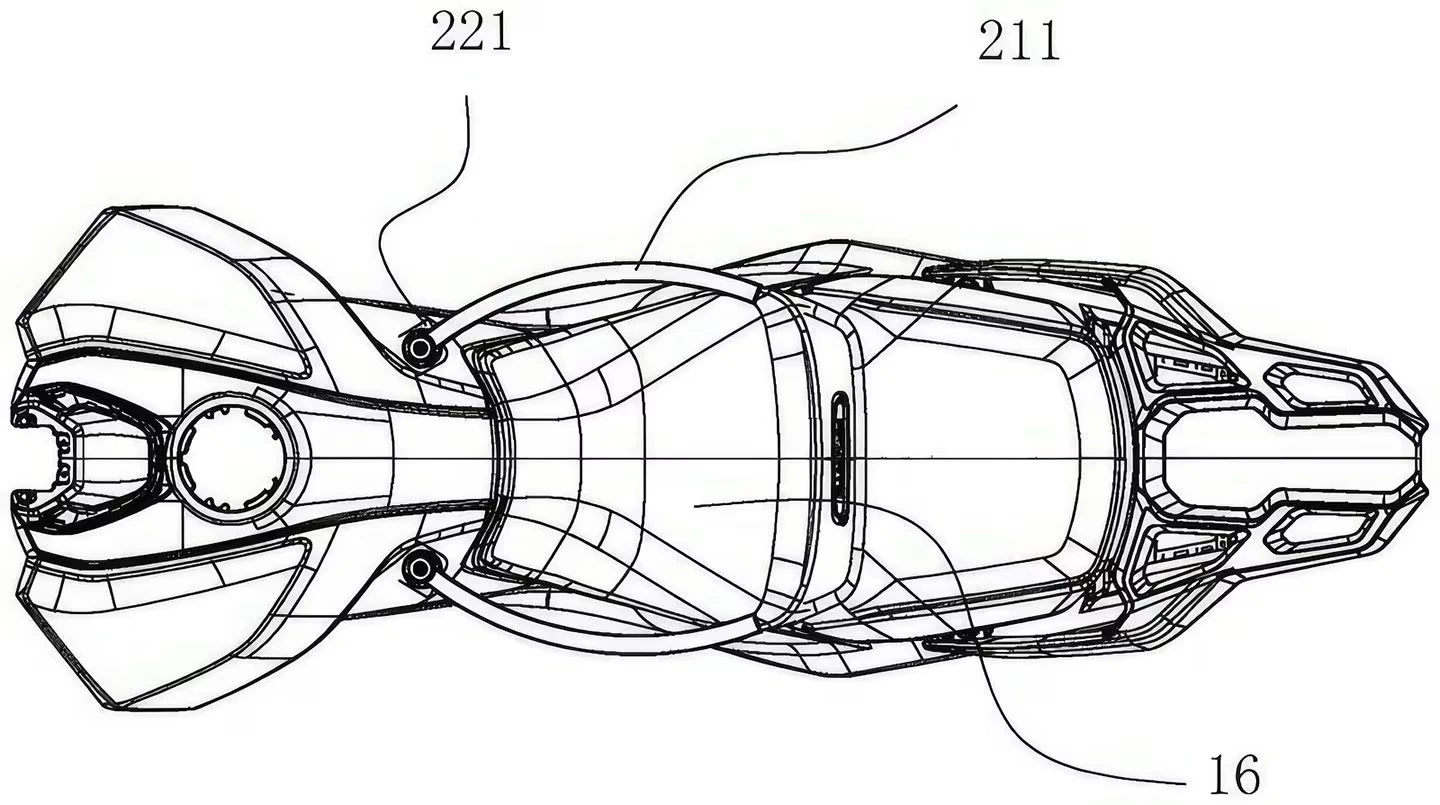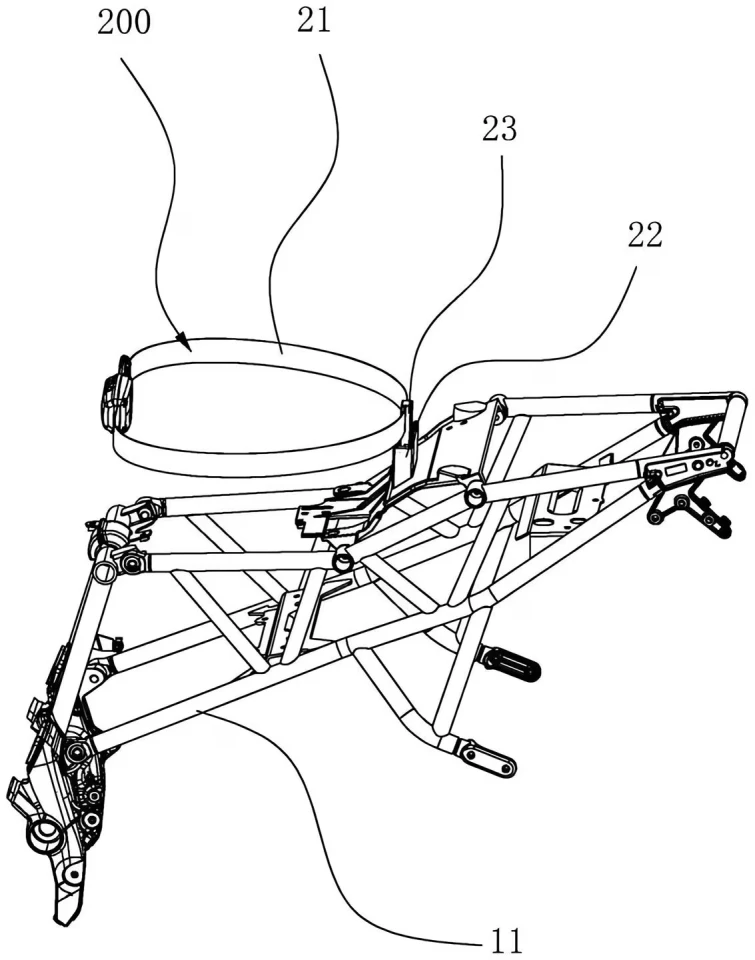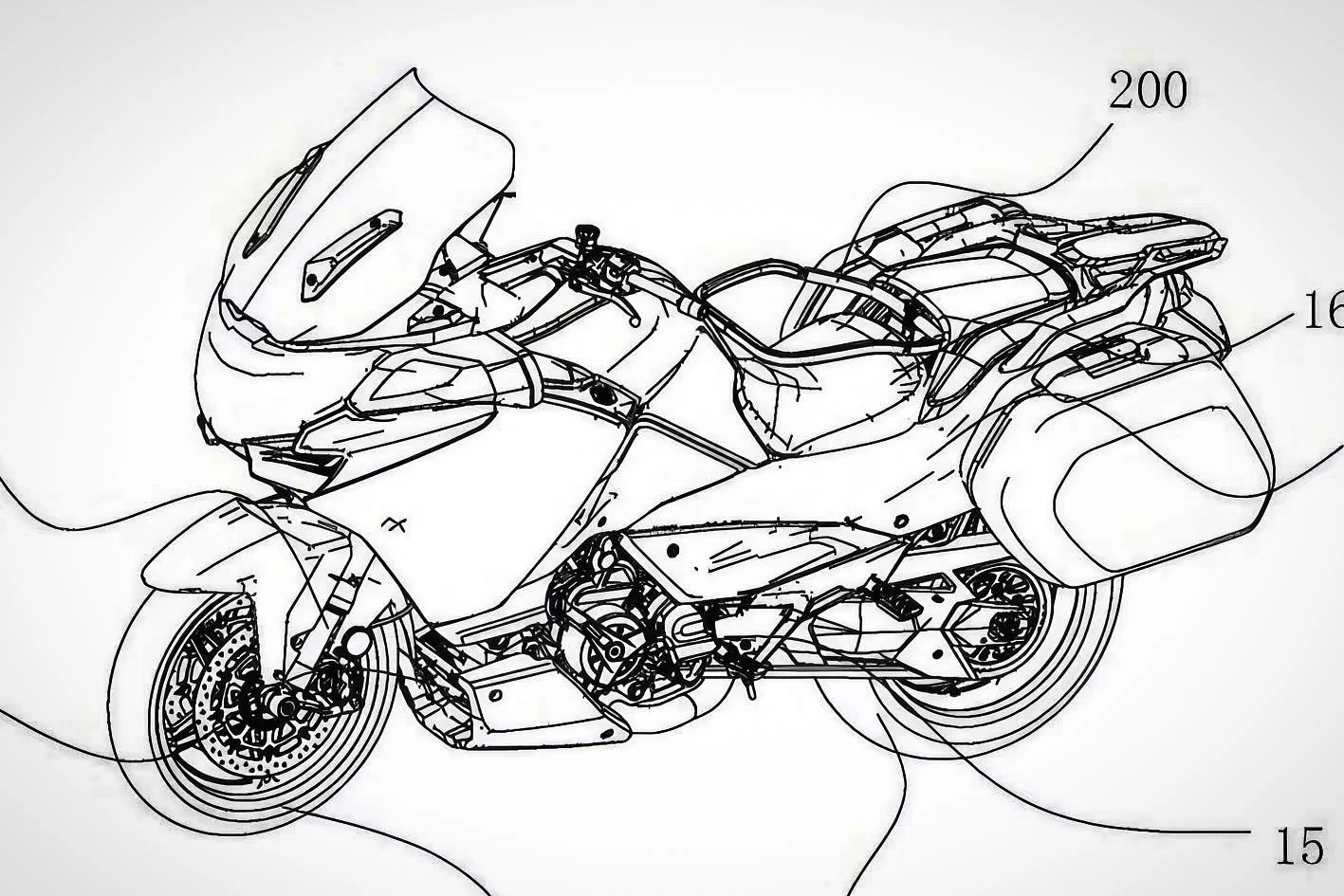Chinese manufacturer CFMoto thinks motoryclists should buckle up. The company has recently applied for a patent for a seat belt setup that holds riders in their seat under hard braking, or in a frontal crash.
As per the the patent, the motorcycle itself will act as a kind of crumple zone, to cushion the force of frontal impacts against solid objects, such as when a biker runs into the back of a car – an event that's anecdotally becoming more common in the era of automated emergency braking (AEB) systems.
There's no doubt these AEB systems are useful in a four-wheeler, but it's hard to see how they could ever work on motorcycles. A biker needs to be physically prepared and positioned for a hard braking event, even in a straight line, and if the bars are turned at all, hitting the brakes can be a spectacularly bad idea. So when AEB systems pull cars up to an abrupt halt, you sure don't want to be behind them on a motorcycle.
But I digress, back to the seat belt patents. Per CFMoto, the proposed safety belt system will hold the rider on the seat, only allowing them to slide off the bike when the bike falls over, or when it senses a sideways force during a collision.

One design iteration from the Chinese manufacturer’s patents shows how it might work – it's based on a spring-loaded system. The bike's gas tank has a pair of bars attached to it that don't allow for any upward movement, but are free to move side to side.

In another iteration, we can see a fabric belt that supposedly keeps the rider in place. This belt is fastened to a short post behind the rider's seat and features a front clasp that makes it simple for the rider to engage. It's designed so the belt can slip off its post in the event of a side impact, but it'll hold the rider's waist or torso back under hard braking and in frontal crashes.
According to our old colleague and peerless patent-hound Ben Purvis, now at Cycle World, these ideas are illustrated by CFMoto on its 1250 TR-G touring bike, which is currently exclusive to China. Purvis muses that a system like this might allow motorcycles to start running their own AEB systems, which could slam on the brakes when deemed necessary without fear of sending the rider on a surprise excursion over the handlebars.
Certainly, CFMoto is approaching this with the best of intentions – but the reality of life on two wheels often intrudes when technologists try to keep bikers safe.

In this example, anyone who's got significant seat time on a motorcycle or scooter may know all too well how crucial it is to get off the bike as soon as you can in the case of a fall. Anything that holds you to the seat for even a split second could increase the chance your leg will be crushed under the bike and dragged across the tarmac if it hits the deck.
What happens if debris gets caught in the spring-loaded sideways release component? Will those bars break or bend themselves into gut-stabbing stumps upon impact? How will any of this affect the dynamics of riding? In our view, the idea, however noble in intent, is not just unsuitable out in the real world; it also offers riders – especially novices – a false sense of security.
Interestingly, this is not the first time we've seen motorcycles and seatbelts used in the same sentence. You might remember the short-lived BMW C1 roofed scooter.
We can see what CFMoto is trying to do with this idea. Cars are safer. Cars have seatbelts. Thus it might make sense to design a motorbike that resembles a car. The reality, in fact, is that bikes and cars are very different vehicles. For this reason, so much about this idea seems ridiculous.
Even in 2024, any motorcycle, regardless of how expensive it is or how much safety equipment it has on board, needs the rider's full attention – both physically and mentally. As soon as we cede responsibility to these rider aids on a two-wheeler, we let go of any and all human effort to ensure our own safety. While the goal of all these safety measures is undoubtedly to reduce injuries and avoid accidents, the way they operate may actually end up doing the opposite.
As Loz Blain, our editorial director remarks, “I think I'd prefer to do the 'Superman' over the hood of a car and take my chances as opposed to staying with the bike and getting my spine crushed by a belt! Not to mention, it looks uncomfortable as hell. :)”
Source: via CycleWorld








